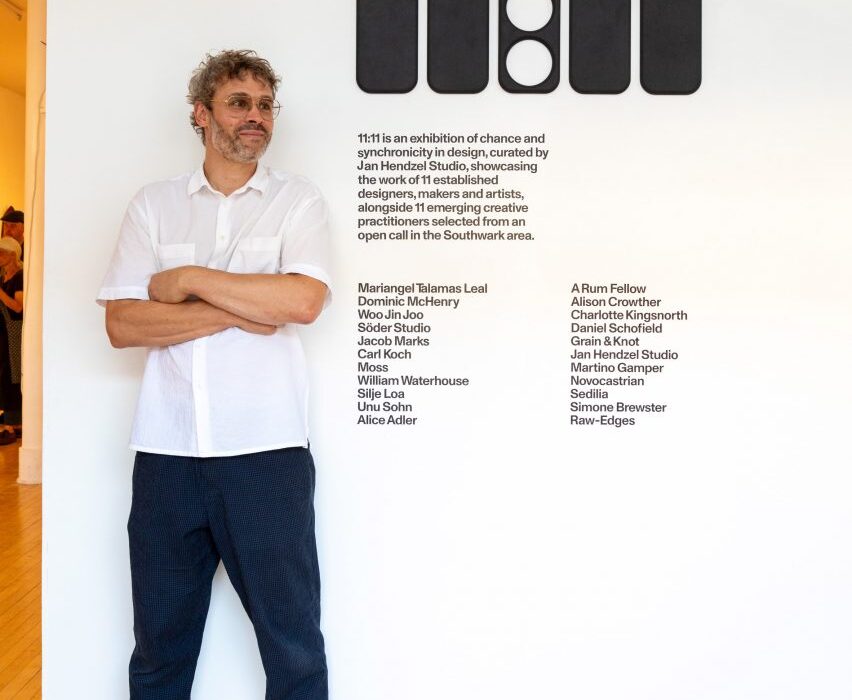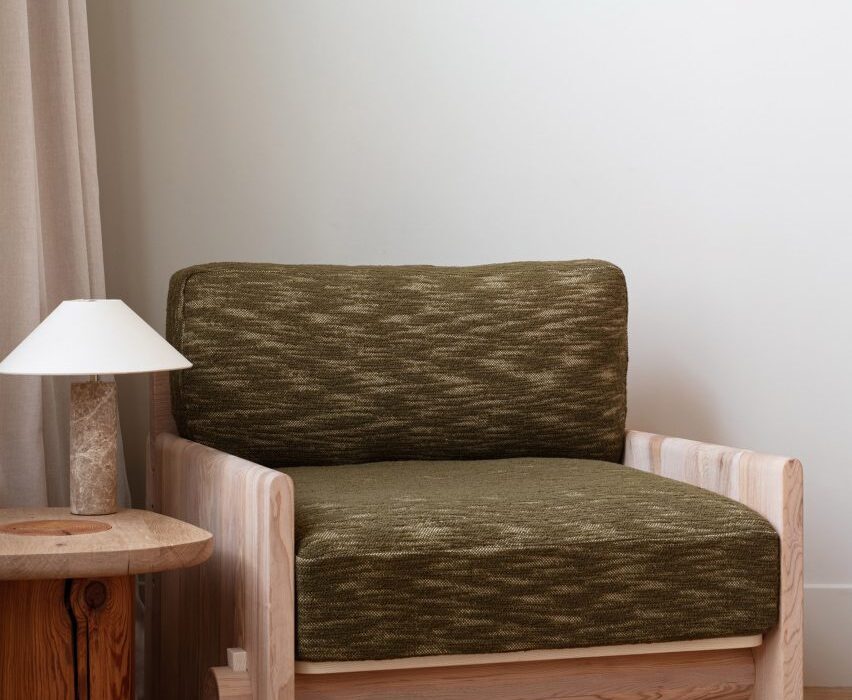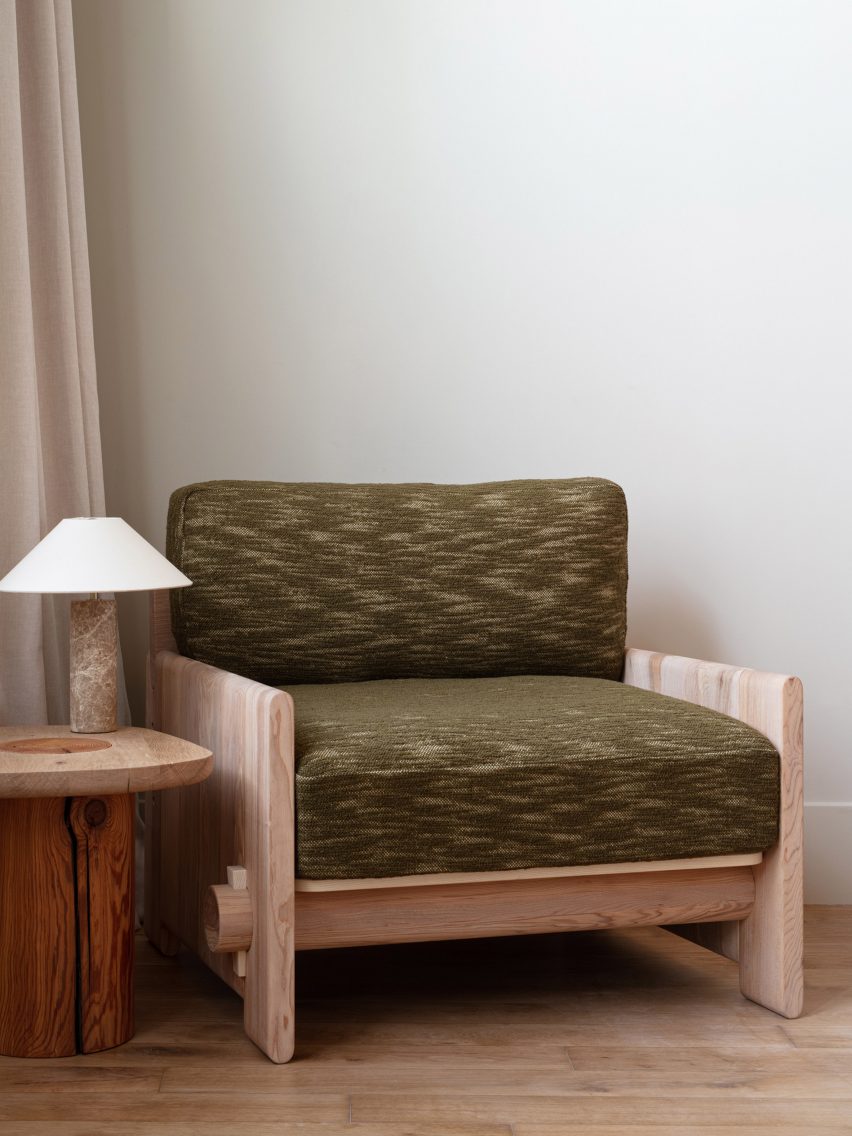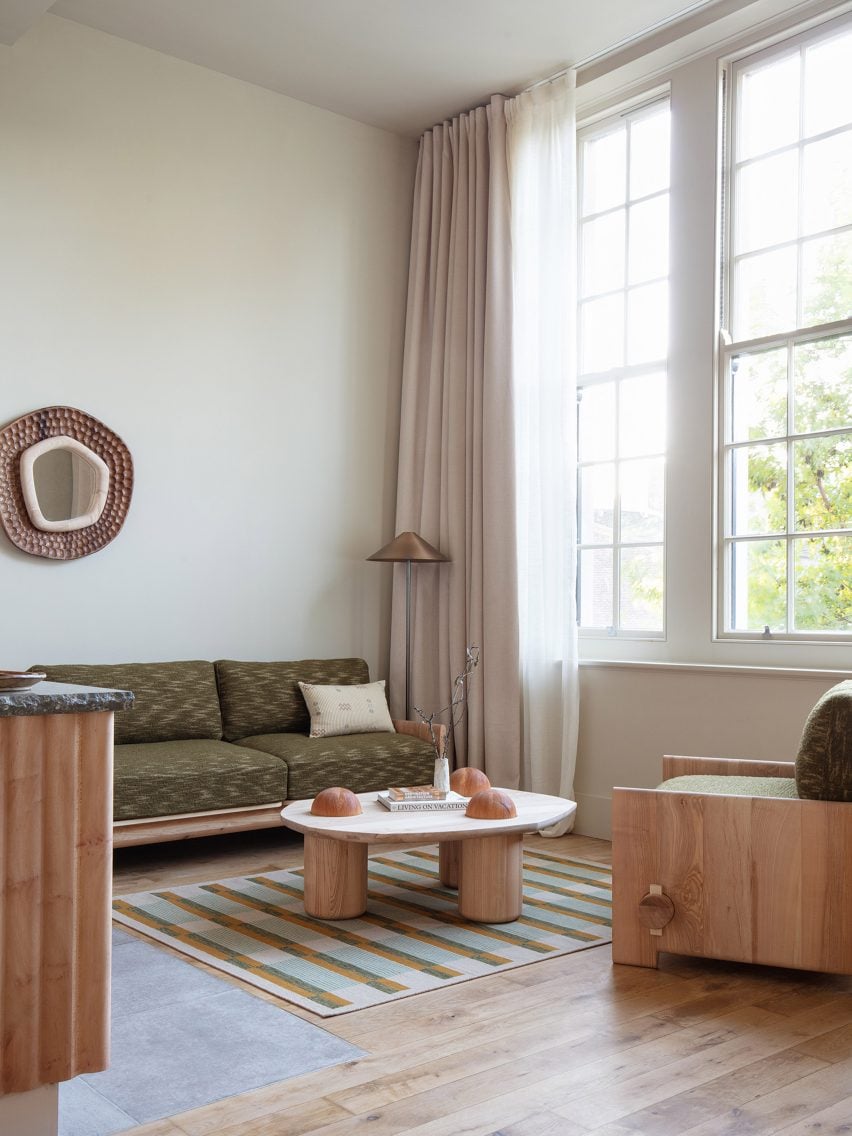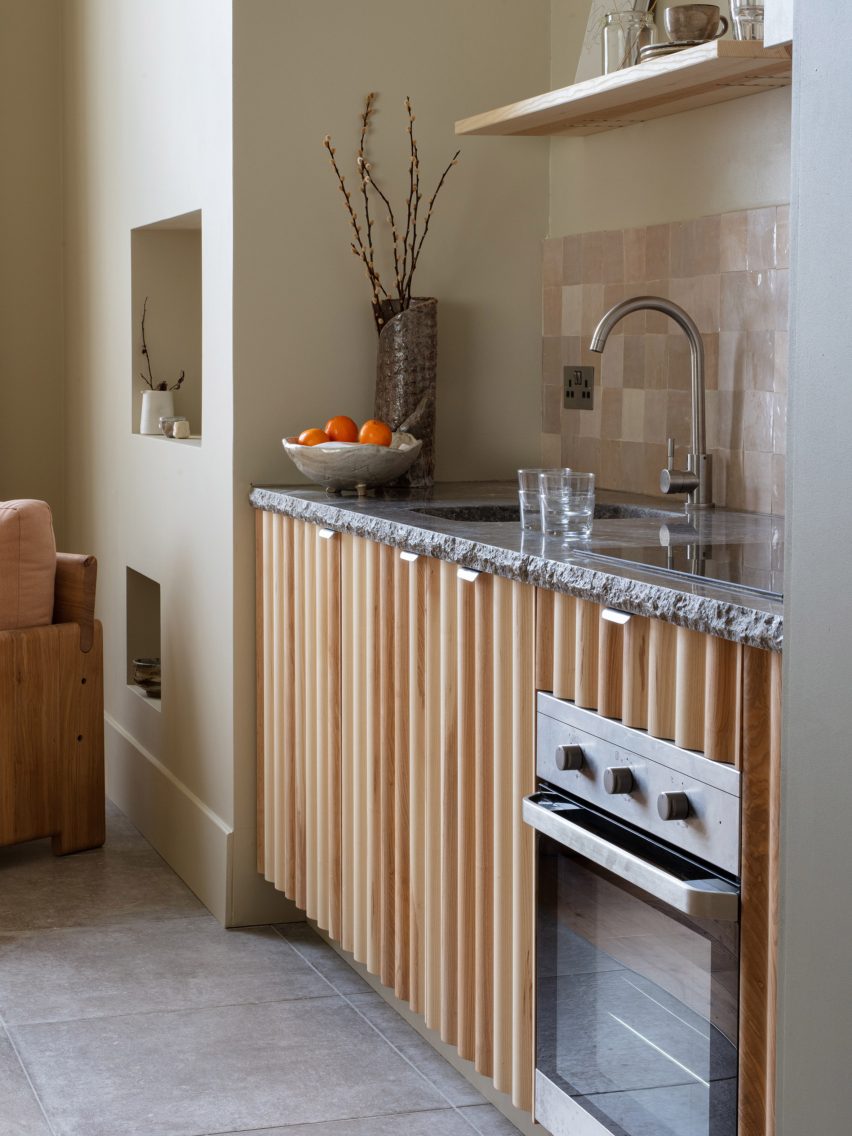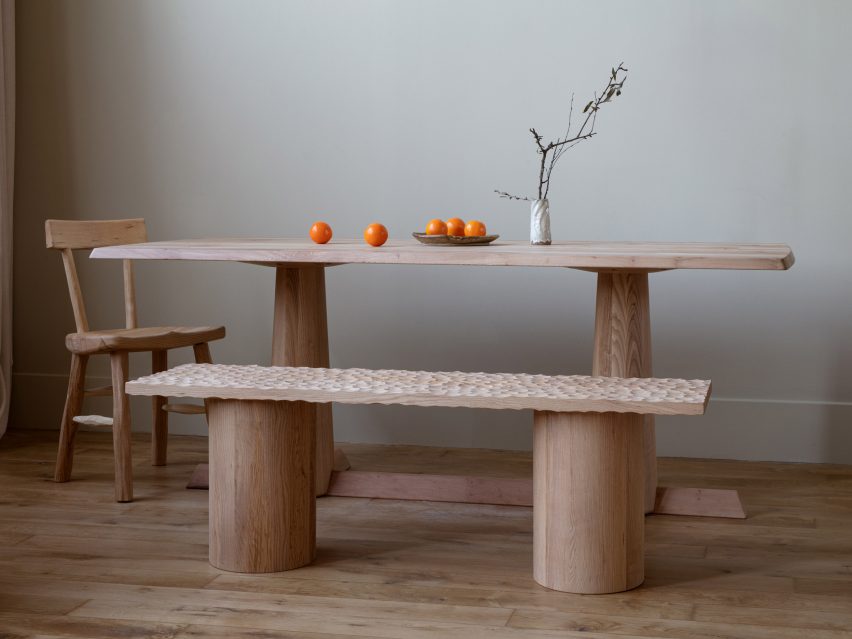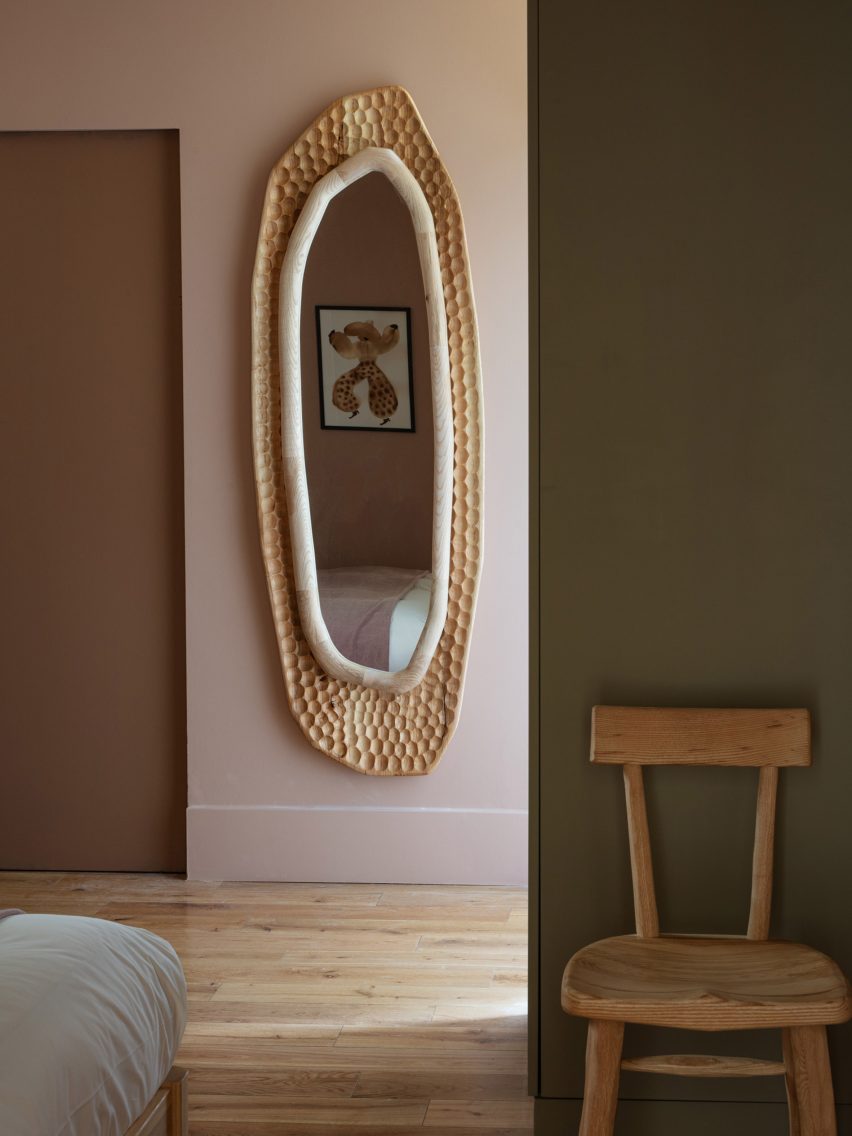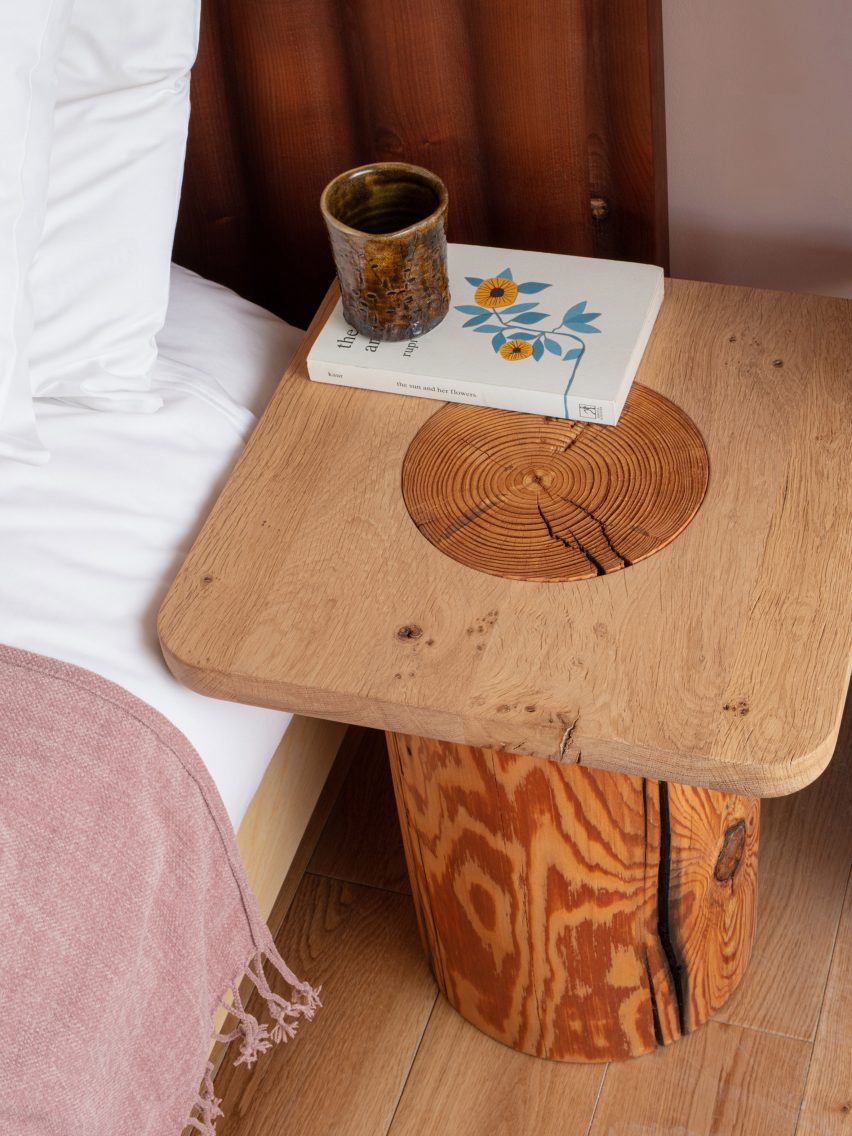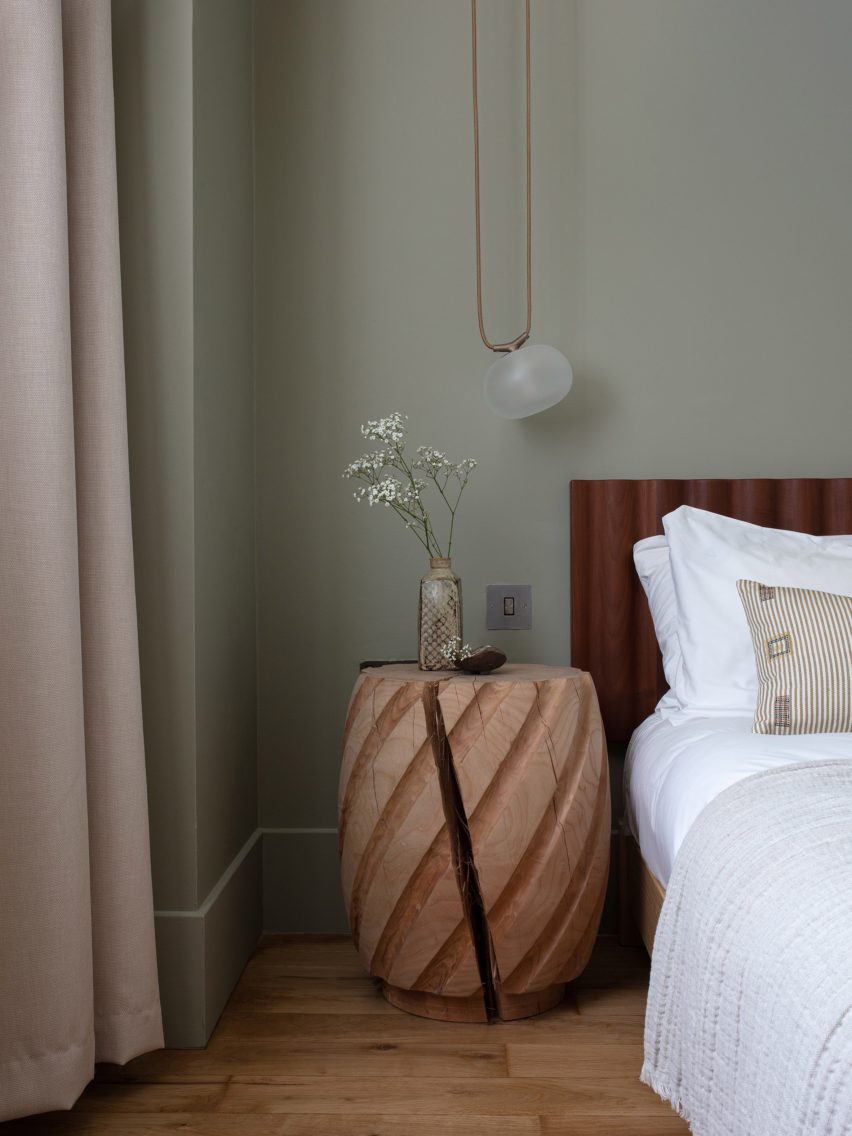“Emerging talents require nurture” says Jan Hendzel
More can be done to support emerging designers in London says Jan Hendzel, who curated an exhibition focused on emerging talent at this year’s London Design Festival.
Jan Hendzel Studio curated the 11:11 exhibition, which paired 11 established designers with 11 emerging designers, to draw attention to interesting south London designers.

“Our emphasis was on creating a platform to support the grassroots and emerging creators of south London,” Hendzel told Dezeen.
“By forging new relationships and connecting the established design industry with up-and-coming makers, 11:11 aims to create a more inclusive and diverse future in design.”
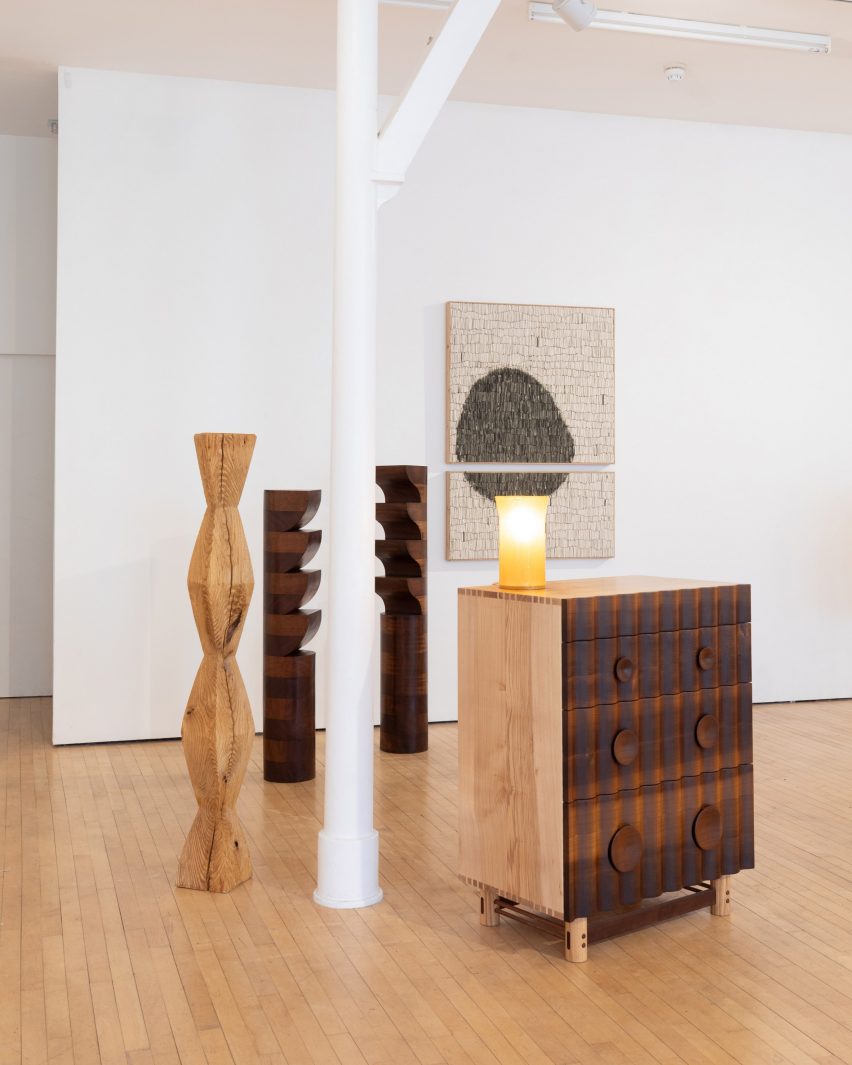
For the exhibition, 11 established designers – A Rum Fellow, Alison Crowther, Charlotte Kingsnorth, Daniel Schofield, Grain & Knot, Jan Hendzel Studio, Martino Gamper, Novocastrian, Sedilia, Simone Brewster, Raw Edges – each displayed their work alongside an emerging designer selected from an open call.
The emerging designers showcased were Alice Adler, Carl Koch, Dominic McHenry, Jacob Marks, Mariangel Talamas Leal, Moss, Silje Loa, Söder Studio, Unu Sohn, William Waterhouse and Woojin Joo.
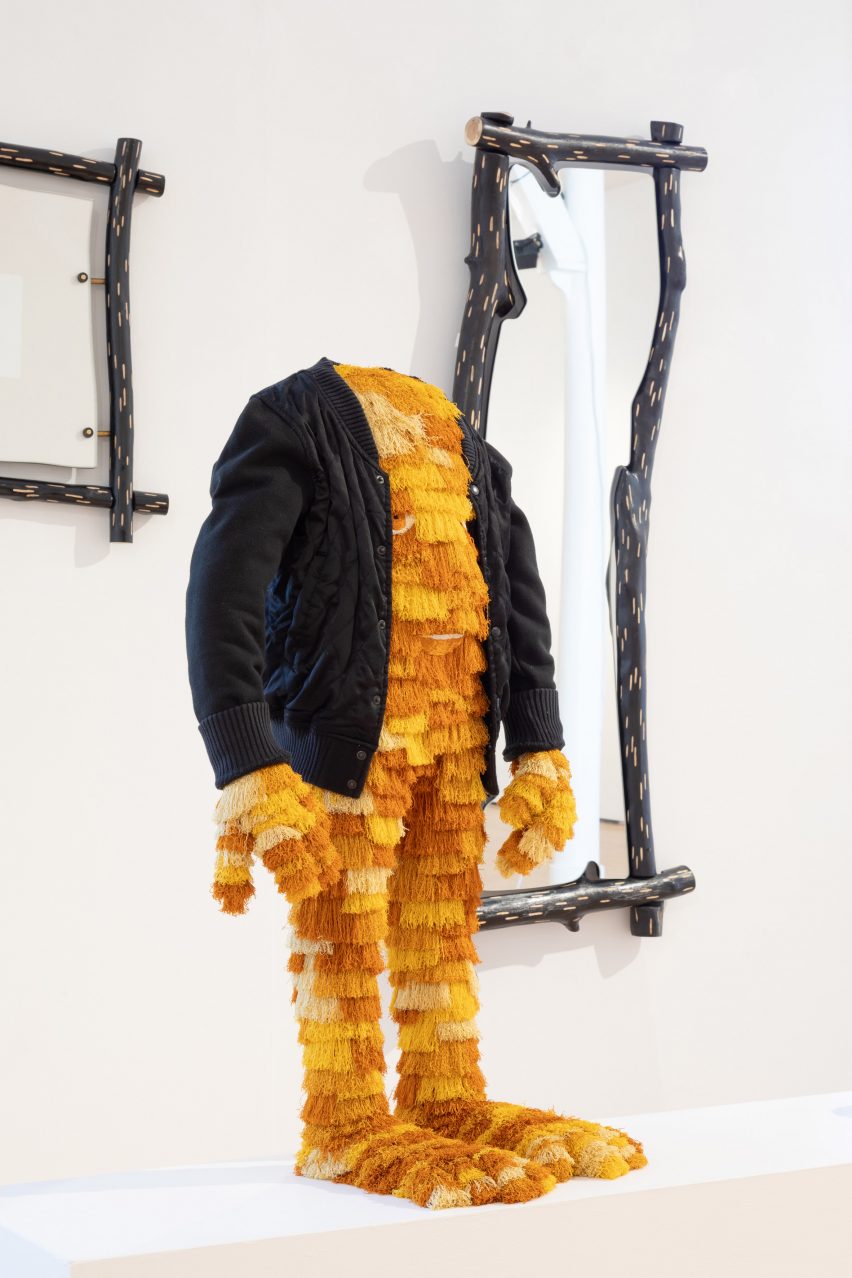
Hendzel believes that events like LDF can create space for emerging talents to showcase their work, but often focuses on university-educated designers.
“The importance of offering a platform to emerging talent, especially that of grassroots and local level creatives, is to offer empowerment and to demonstrate that design is a profession that can offer meaningful and exciting careers,” he said.
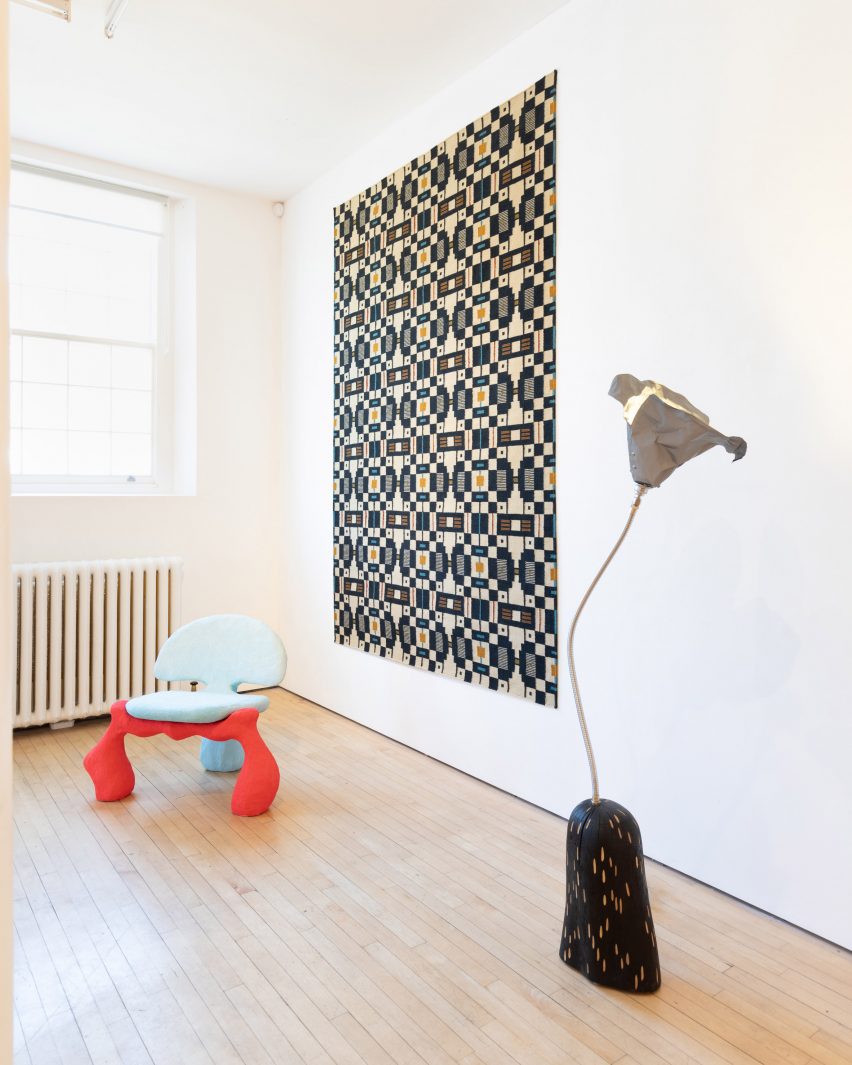
“When the design festival rolls into town, yes, I believe we do have platforms for emerging creatives; however, one big issue is that design shows can be cost-prohibitive and often focus on university-educated people, which by default puts the profession at the more elitist end of things,” he continued.
“If you don’t have cash or a degree then finding a platform to celebrate your ideas can be difficult.”
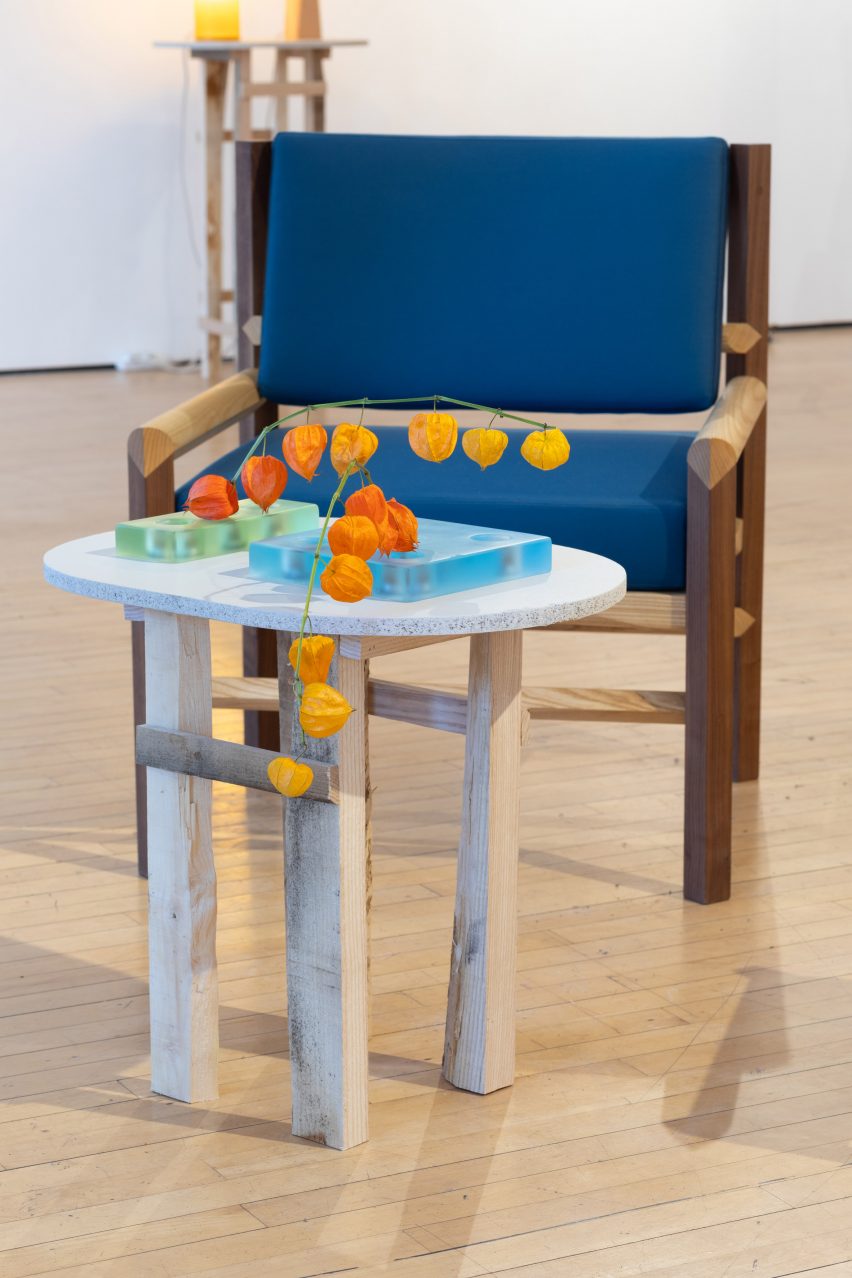
He believes that LDF and others can do more to support emerging talents, and suggests that providing free space for exhibitions and installations would be a way of doing this.
“Emerging talents require nurture, they require safe places to practise their respective disciplines and they require opportunities for growth through connections and collaborations with established practitioners to elevate their craft,” he explained.
“A great opportunity would be to find and offer more free spaces to emerging groups, alongside bursaries and support packages in how to promote your event and develop your respective craft within a design district.”
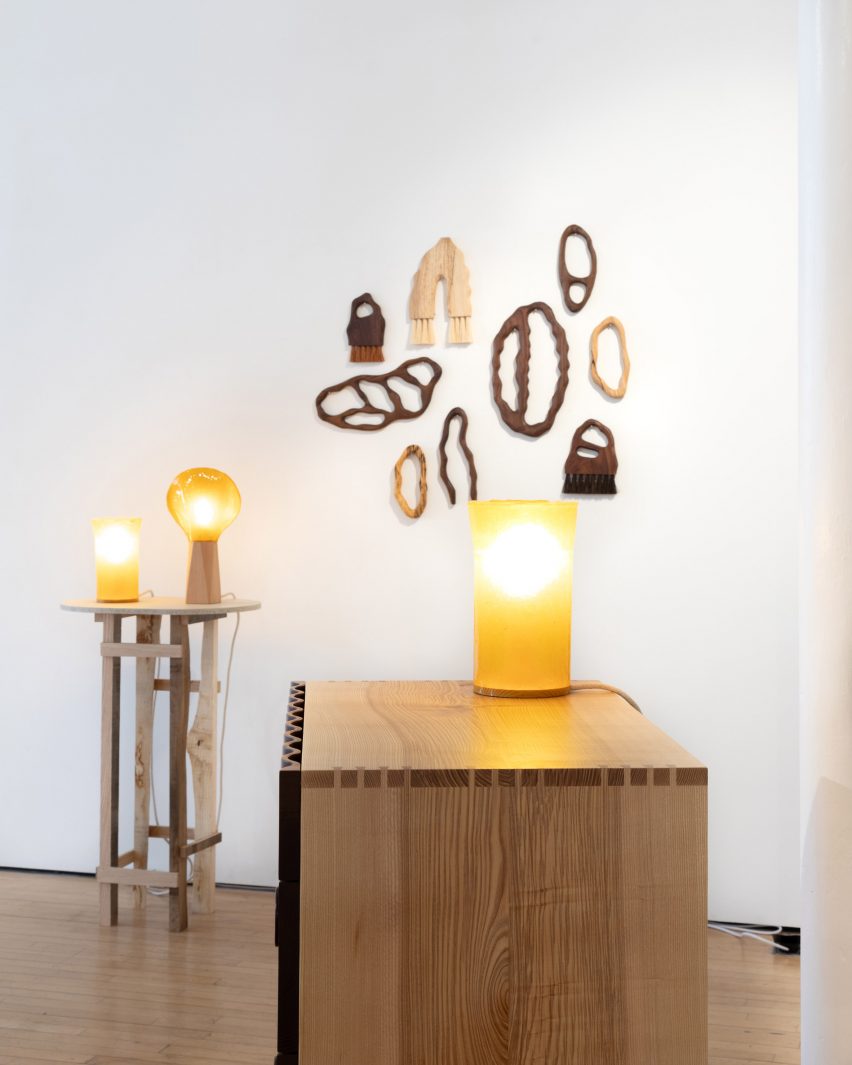
The exhibition, which is taking place at Staffordshire St gallery in Peckham, includes numerous pieces of furniture with chairs designed by Gamper and Leal, as well as drawers by Jan Hendzel Studio and Crowther.
Sedilia’s contribution was a Roll Top Chair and Roll Top Ottoman.
The exhibition also include mirrors designed by Jan Hendzel Studio, Novocastrian and Kingsnorth, and clothing by Soeder.
Also on display were lights by Schofield and by Marks.
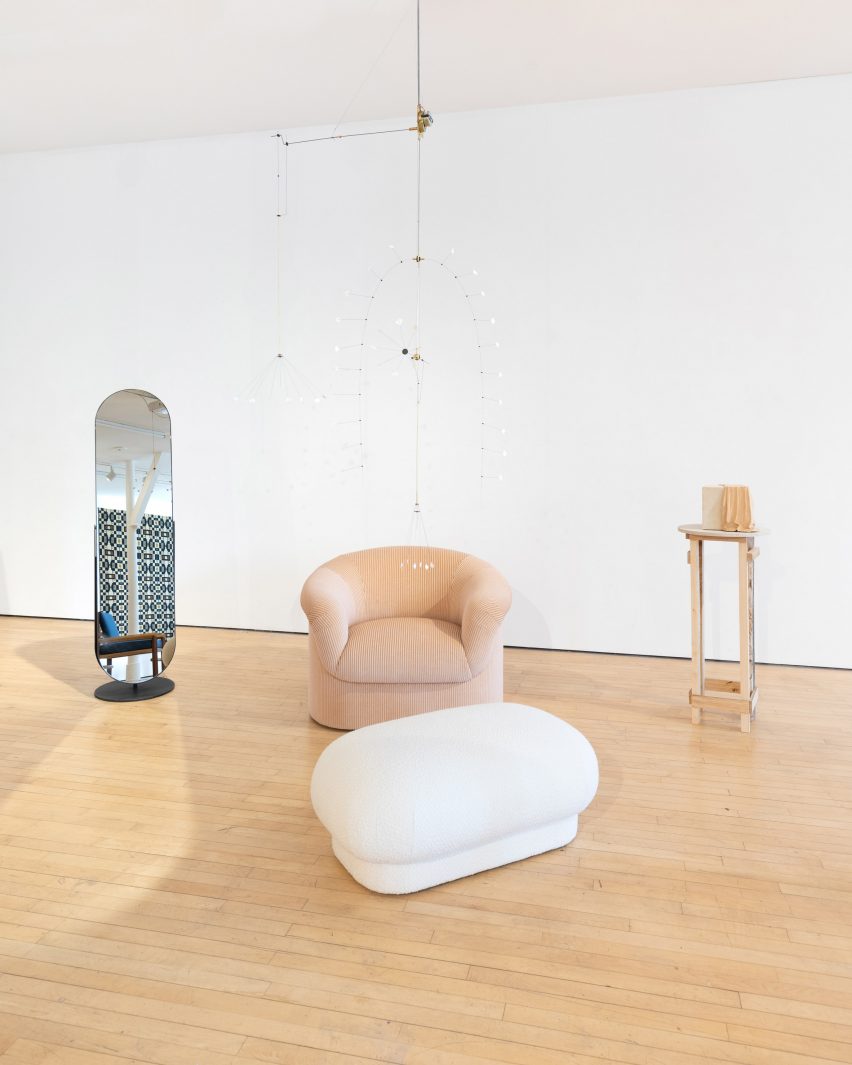
Another exhibition showcasing the work of emerging designers at LDF was Drop02, which contained work from IKEA and H&M’s Atelier100 design incubator.
Other projects currently on display as part of the festival include a prototype modular furniture system by Zaha Hadid Design and furniture by Andu Masebo crafted from a scrapped car.
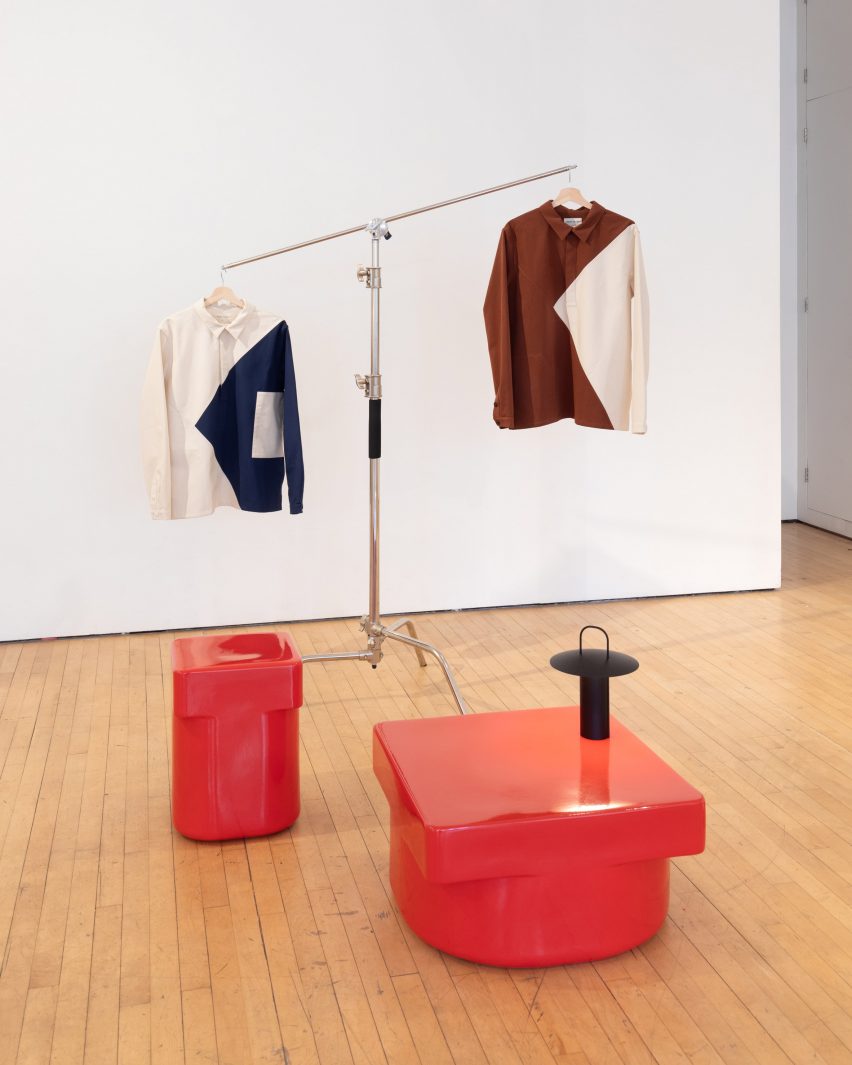
The photography is by BJ Deakin Photography.
The 11:11 exhibition takes place 16-24 September at the Staffordshire St gallery as part of London Design Festival 2023. See our London Design Festival 2023 guide on Dezeen Events Guide for information about the many other exhibitions, installations and talks taking place throughout the week.

